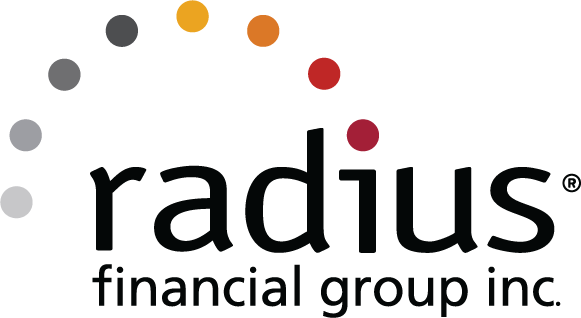Are you interested in purchasing a home but unsure about meeting the monthly payments? Or a home in a neighborhood you love but aren’t sure you can afford? If yes, you might want to consider looking into a foreclosed home.
Foreclosed homes are homes repossessed by a bank or lender after the homeowner stops making mortgage payments. Banks or lenders will then sell the home for a lesser amount with a smaller down payment.
Purchasing a foreclosed home isn’t much different from the normal home-buying process. However, there are different scenarios in which you would purchase a foreclosed home. In this blog post, we detail these three scenarios, who is involved in them, and the advantages and disadvantages of each.
The Process of Purchasing a Foreclosed Home
As mentioned, purchasing a foreclosed home has several similarities to purchasing a home on the market. However, there are a few crucial steps that are specific to purchasing foreclosed homes:
Partner with a foreclosure real estate agent.
As you will read later on, there are several aspects of purchasing a foreclosed home that can get pretty tricky. Realtors without experience can make the process even more complicated and might put you at risk for purchasing a home that is in poor condition.
Get pre-approved.
It’s highly recommended that you go through the pre-approval process for purchasing a foreclosed home. Banks and lenders tend to be very sensitive to credit issues and financial situations when it comes to foreclosure, so providing information that shows you are reliable is a must.
Search for foreclosed homes.
Once you’re pre-approved, you can begin looking for foreclosed homes. To be safe, you will want to default the search to your realtor. They know which state of the foreclosure process the home is in, which can determine the number of advantages and disadvantages. If you’d like to do your own research, there are online resources, such as HUD Foreclosures.
Make an offer.
The offer you make will depend on the stage of foreclosure. For instance, a foreclosed house at auction will only accept cash while a home in post-foreclosure allows for a loan similar to one used for a house on the market.
Review the appraisal and home inspection.
Finally, your lender will require an appraisal to ensure that the value of the home aligns with your offer (this is not the case if you purchase the home with cash).
Next, you will want to order a home inspection. Seeing as foreclosed homes often bought as-is, you will want to know of every potential issue. If a home inspection does not happen, you might discover crucial issues that need to be repaired but are outside of your budget.
The Three Scenarios of Purchasing a Foreclosed Home
There are three different scenarios that provide an opportunity to purchase a foreclosed home: Pre-foreclosure, auction, and post-foreclosure. Each comes with advantages and disadvantages.
The Pros and Cons of Pre-Foreclosure
Pre-foreclosure tends to be one of the more difficult stages to purchase a foreclosed home. In this stage, the foreclosure has not yet been initiated, but months of missed payments have occurred. This is the stage between when a “notice of default” is issued to the homeowner and when the home is put up for auction, meaning that the house is not necessarily for sale. If you choose to initiate the home purchase, it will be between you and the homeowner.
Although the buyer has some bargaining power, if the owner is actively avoiding foreclosure, a purchase in this stage means that the property is sold in its current state, which might not be in the best shape if the homeowner is in financial trouble.
The buyer can still perform title searches and inspections within the standard due diligence period.
The Pros and Cons of an Auction
At this point, the original lender of the foreclosed home will auction off the property. To encourage bidding, the price usually starts at the outstanding balance of the mortgage because the lender cannot legally profit from the sale at the auction.
The buyer can take advantage of the prices that are often substantially below market value. Plus, most auctions are cash bids, which means that the buyer pool is much smaller than in a normal market.
Keep in mind that there are some financial limits in this stage. Paying cash is your only option. Plus, you are purchasing the home “as-is,” meaning that the bank cannot provide information concerning the history or condition of the property.
The Pros and Cons of Post-Foreclosure
If the property is not sold at auction, it becomes bank-owned or real-estate-owned (REO) property. The lender can sell the property in the general real estate market or at an REO auction.
At this stage, the process looks similar to the normal home-buying process, meaning the buyer can use regular mortgage financing and the sale has a normal closing period. Another advantage to the buyer is that the bank can make further concessions to price, down payment, and closing costs to get the property off its books.
However, because the property is an “as-is” sale, the lender cannot provide property history or condition information, so the buyer might run into some issues with the property.
Make a Complex Situation Simpler with radius
As you have read, there are many moving parts when purchasing a foreclosed home. To make the process as predictable as possible, make sure you have access to the right resources and determine the intention of the property.
To help you navigate this purchase, our Loan Officers can weigh your options and offer advice on the necessary steps of the process.
If you are navigating the home-buying process for the first time, don’t do it alone. Download our mortgage preparedness guide to get the facts you need to buy your first home.


